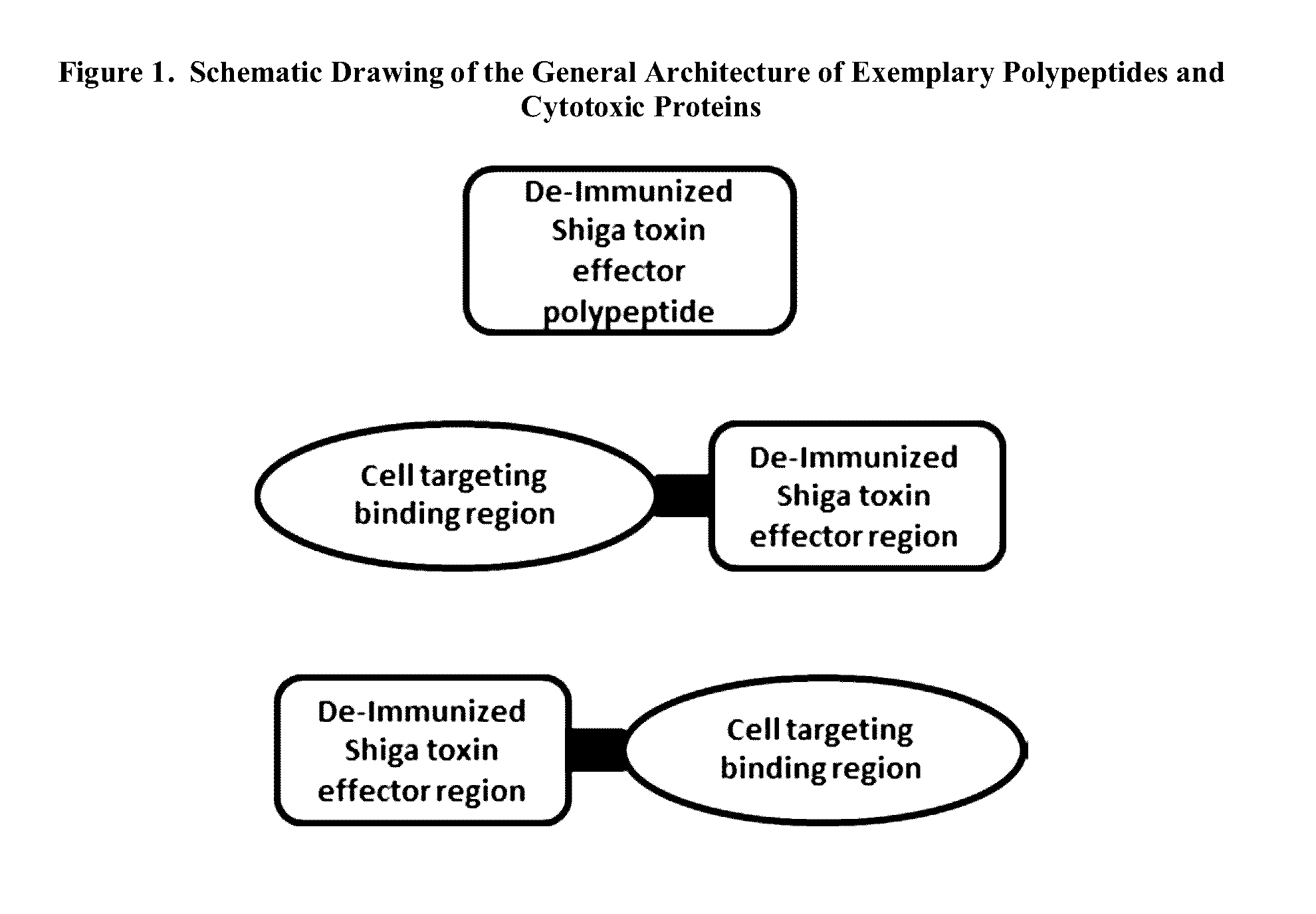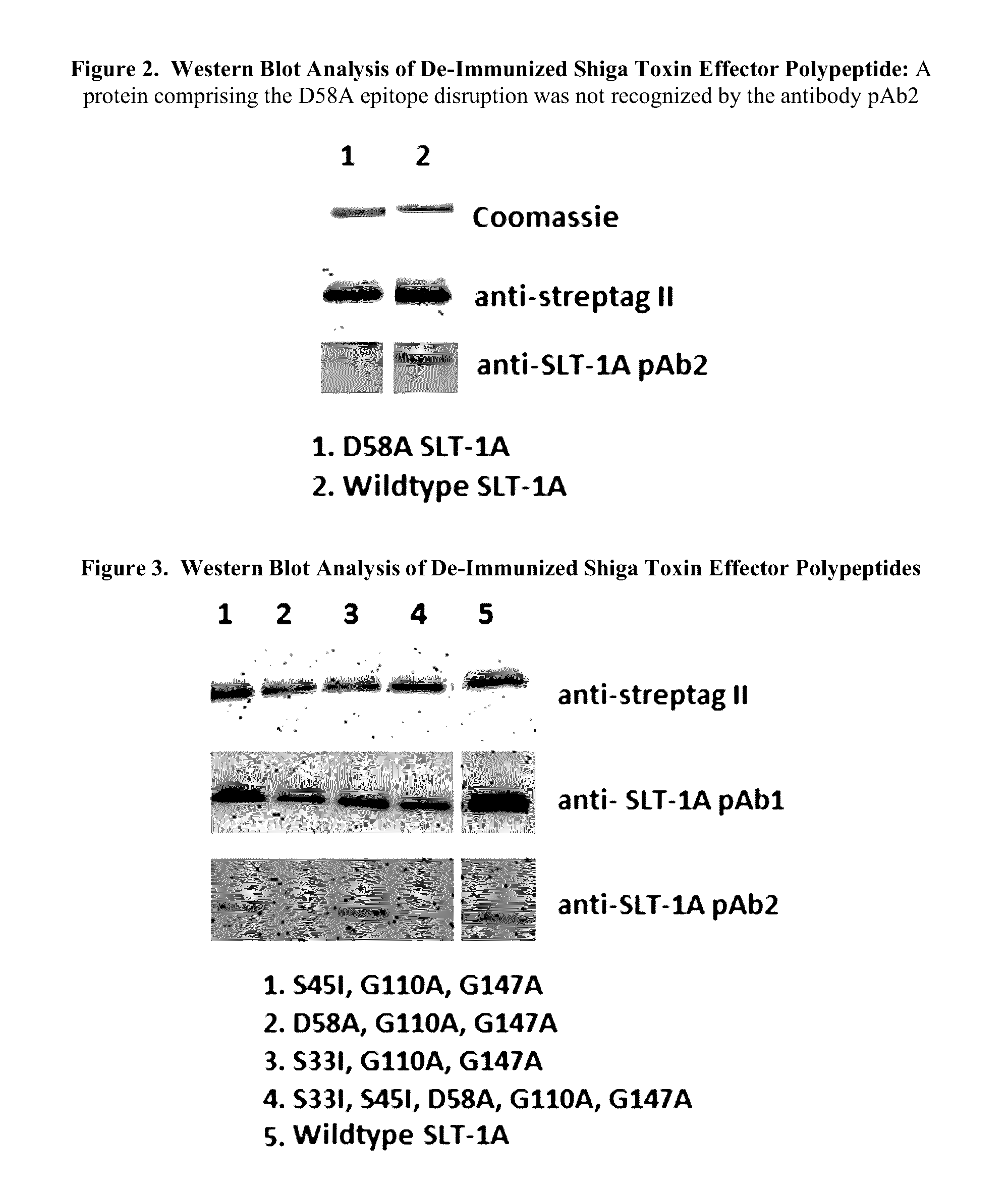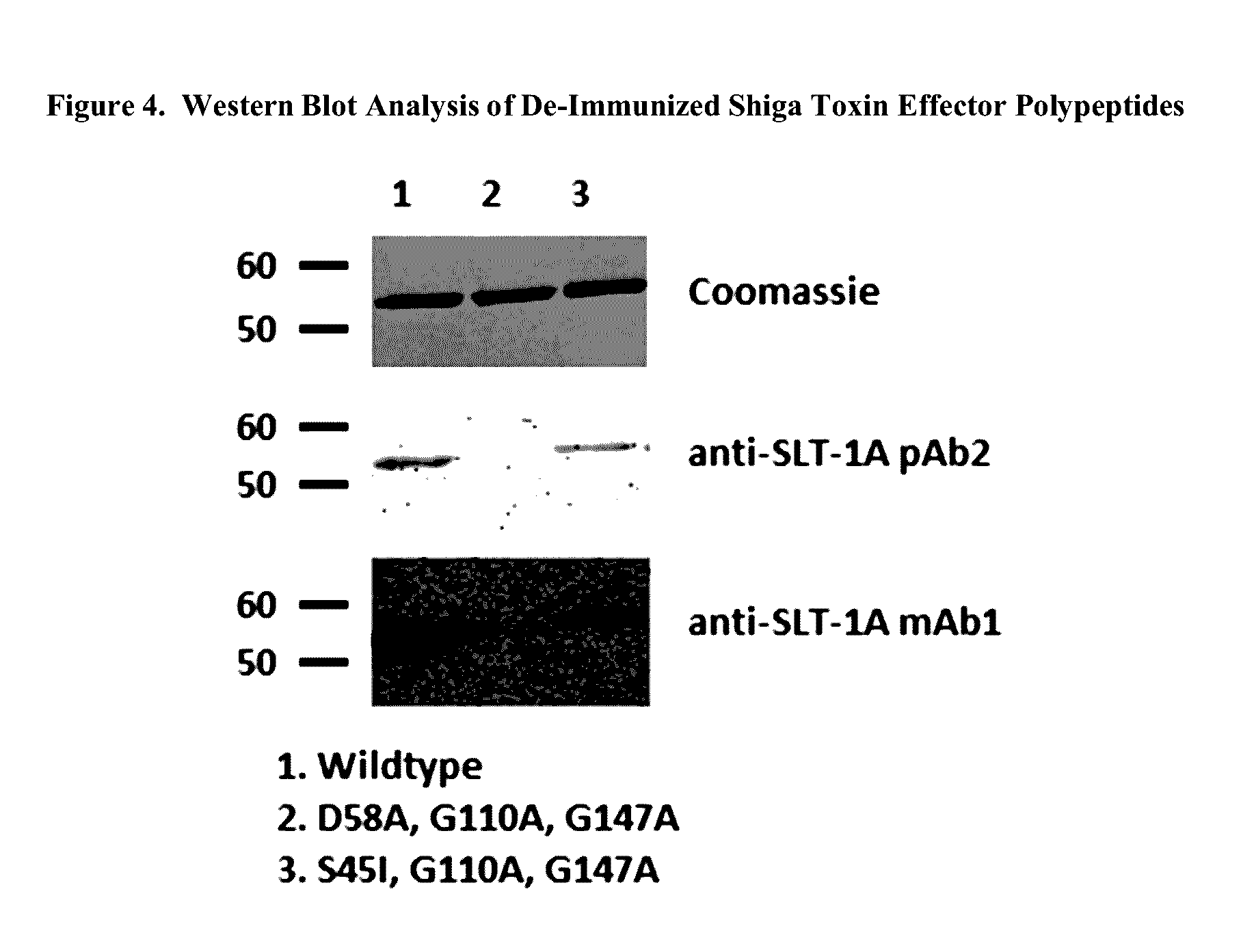De-immunized shiga toxin a subunit effector polypeptides for applications in mammals
a technology of effector polypeptides and shiga toxin, which is applied in the field of deimmunization of shiga toxin effector polypeptides, can solve the problems of unfavorable immune responses, unpredictable pharmacokinetics, and reduced efficacy, and achieve the effect of reducing antigenic and/or immunogenic potential
- Summary
- Abstract
- Description
- Claims
- Application Information
AI Technical Summary
Benefits of technology
Problems solved by technology
Method used
Image
Examples
example 1
Predicting Immunogenic and Antigenic Epitopes in Shiga Toxin A Subunits
[0308]The antigenic and / or immunogenic sites within the A Subunits of Shiga toxins had never been systematically mapped. Computational methods were utilized to predict antigenic and / or immunogenic epitopes in various Shiga toxin A Subunits. Both B-cell epitopes and CD4+ T-cell epitopes with potential to elicit responses in mammalian immune systems were predicted in silico.
[0309]Linear B-cell epitopes were predicted for the mature A Subunit of Shiga-like toxin 1 (SLT-1A; SEQ ID NO: 1) from the polypeptide sequence and 3D structural data of Shiga-Like Toxin Chain A (PDB ID: 1DMO0_A) by ProImmune Inc. (Sarasota, Fla., U.S.) using their REVEAL® system.
[0310]In parallel, B-cell epitopes were predicted from the amino acid sequences of the A Subunits of Shiga toxin (StxA; SEQ ID NO:2), Shiga-like toxin 1 (SLT-1A; SEQ ID NO: 1), and Shiga-like toxin 2 (Stx2A; SEQ ID NO:3) using the BcePred webserver (Saha S, Raghava G, L...
example 2
De-Immunization of Shiga Toxin Effector Polypeptides
[0316]Deletions and / or amino acid substitutions were made in the putative B-cell and T-cell epitopes of Shiga toxin effector polypeptides derived from the A Subunit of Shiga-like Toxin 1 (SLT-1A). In addition to the described point mutations that disrupted predicted epitopes, some constructs comprised one or more point mutations that had no apparent effect on Shiga toxin effector enzymatic activity or cytotoxicity, such as, e.g., R223A in SLT-1A, C242S in SLT-1A, and / or C261S in SLT-1A.
[0317]In this example, a Shiga toxin effector polypeptide region was derived from the A Subunit of Shiga-like Toxin 1 (SLT-1A). A polynucleotide that encoded amino acids 1-251 of SLT-1A was used as a template to create various polynucleotides encoding various Shiga toxin effector polypeptides with one or more disruptions of a predicted B-cell epitope(s). Shiga toxin effector polypeptides comprising one or more epitope disruptions were expressed from ...
example 3
Empirically Testing De-Immunized Shiga Toxin Effector Polypeptides for Retention of One or More Shiga Toxin Effector Functions
[0329]Various de-immunized Shiga toxin effector region polypeptides were empirically tested for retention of enzymatic activity and cytotoxicity.
[0330]The retention of enzymatic activity of Shiga toxin effector polypeptides after de-immunization was tested using a ribosome inhibition assay in the context of the Shiga toxin effector polypeptide as a component of a cytotoxic protein. In certain experiments, the full-length coding sequence of the cytotoxic protein of this example began or ended with a polynucleotide encoding a Strep-tag® II to facilitate detection and purification.
[0331]The ribosome inactivation capabilities of de-immunized cytotoxic proteins were determined using a cell-free, in vitro protein translation assay using the TNT® Quick Coupled Transcription / Translation kit (L1170 Promega Madison, Wis., U.S.). The kit includes Luciferase T7 Control D...
PUM
| Property | Measurement | Unit |
|---|---|---|
| dissociation constant | aaaaa | aaaaa |
| dissociation constant | aaaaa | aaaaa |
| temperature | aaaaa | aaaaa |
Abstract
Description
Claims
Application Information
 Login to View More
Login to View More - R&D
- Intellectual Property
- Life Sciences
- Materials
- Tech Scout
- Unparalleled Data Quality
- Higher Quality Content
- 60% Fewer Hallucinations
Browse by: Latest US Patents, China's latest patents, Technical Efficacy Thesaurus, Application Domain, Technology Topic, Popular Technical Reports.
© 2025 PatSnap. All rights reserved.Legal|Privacy policy|Modern Slavery Act Transparency Statement|Sitemap|About US| Contact US: help@patsnap.com



